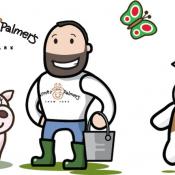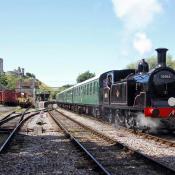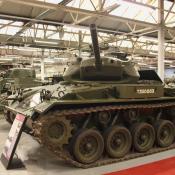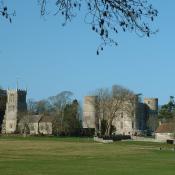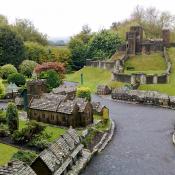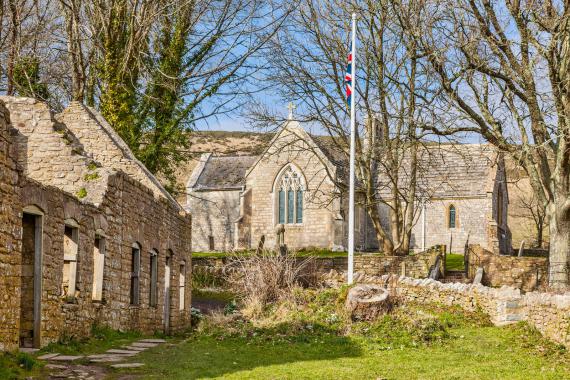
When the two hundred and fifty two inhabitants of Tyneham were displaced during the second world war, so that the War Office could use the land around the village as a firing range for training troops, they left a polite notice on the door to the church:
'Please treat the church and houses with care; we have given up our homes where many of us have lived for generations to help with the war and keep men free. We shall return one day and thank you for treating the village kindly.'
They never did return. Instead, in 1948, the War Office reneged on their original promise and placed a compulsory purchase order on the land. It has remained in use for military training ever since, with the village of Tyneham gradually becoming a 'ghost' village, its ruined or damaged buildings accessible to the public only at weekends and during school holidays.
There have been fishing communities associated with Tyneham since the Iron Age, and evidence of Roman occupation has been found in the valley around the village. Tyneham, which may once have been owned by William the Conqueror's half-brother, Robert, Count of Mortain, is mentioned in the Domesday Book as 'Tigeham', which means 'goat enclosure'.
The limestone church of St Mary, now preserved along with the schoolhouse as a museum, dates from the thirteenth century, although it was refurbished and modernised in the eighteenth century. The names of the evicted villagers line the inside of the church walls, along with their photographs. The Elizabethan Manor House, once the property of the Bond family, was deemed unsafe after damage from shelling and pulled down in 1967.
Tyneham remains part of a wider area used by the Ministry of Defence, known as Lulworth Ranges. Responding to pressure from locals and tourists, the Ministry of Defence began opening up the village and footpaths at weekends and school holidays in 1975. For safety reasons it is important to keep to the footpaths and abide by local site notices.
Due to lack of farming and development, the land around Tyneham has become a haven for wildlife, although it is littered with the remains of targets and subject to regular shelling.
The nearest towns are Lulworth and Kimmeridge. There is a car park by the village, with a gate that is locked each night at dusk.



